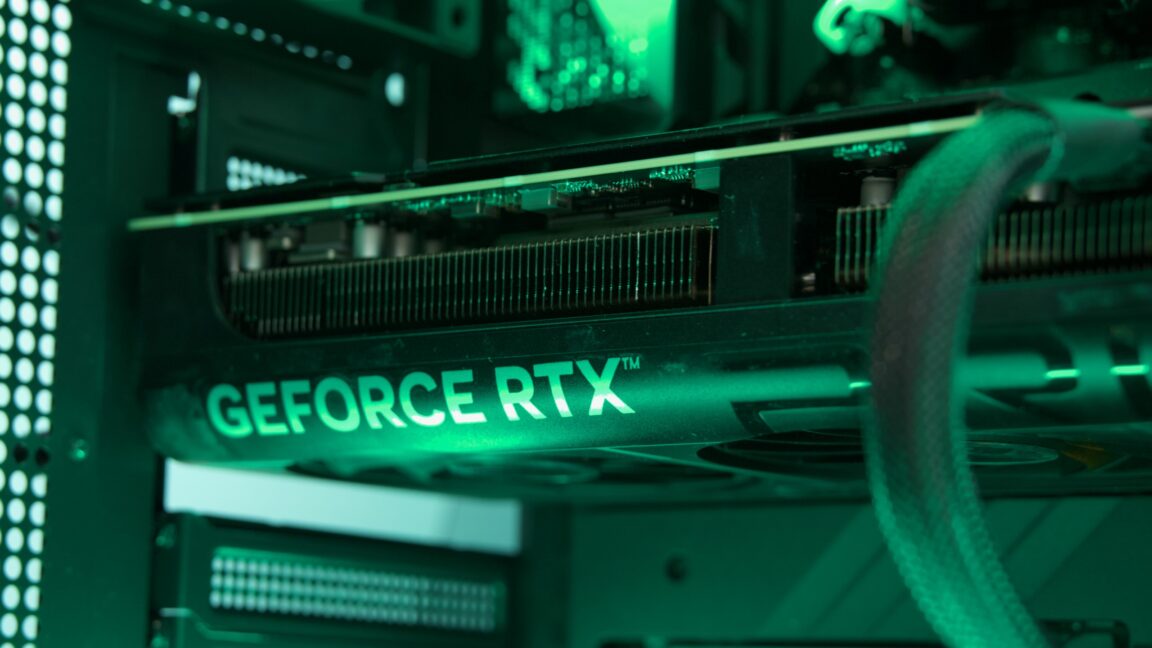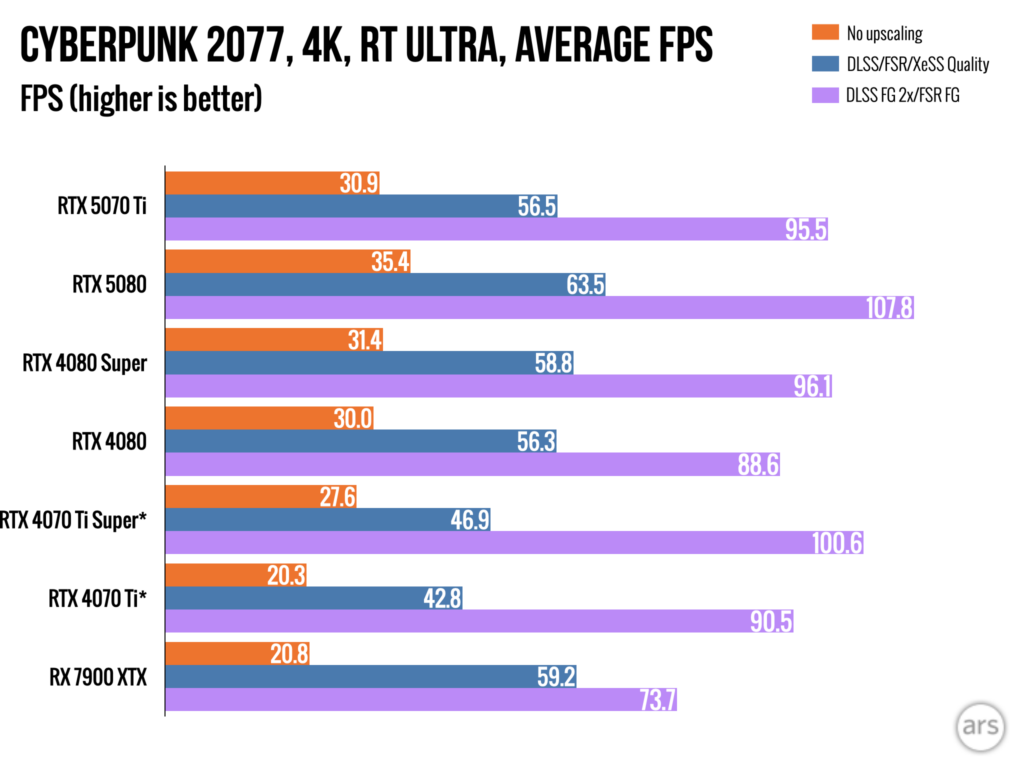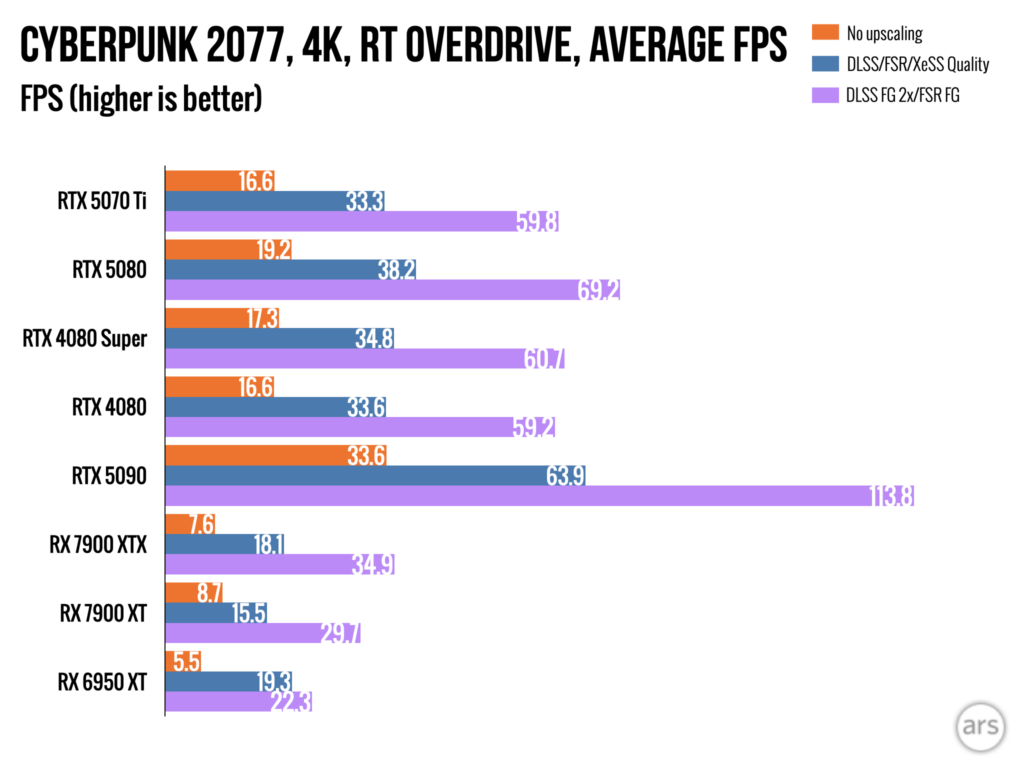Though we’ve tested and re-tested multiple cards with recent drivers in our updated testbed, we don’t have a 4070 Ti Super, 4070 Ti, or 3070 Ti available to test with. We’ve provided some numbers for those GPUs from past reviews; these are from a PC running older drivers and a Ryzen 7 7800X3D instead of a 9800X3D, and we’ve put asterisks next to them in our charts. They should still paint a reasonably accurate picture of the older GPUs’ relative performance, but take them with that small grain of salt.
Performance and power
Despite including fewer CUDA cores than either version of the 4080, some combination of architectural improvements and memory bandwidth increases help the card keep pace with both 4080 cards almost perfectly. In most of our tests, it landed in the narrow strip right in between the 4080 and the 4080 Super, and its power consumption under load was also almost identical.
Benchmarks with DLSS/FSR and/or frame generation enabled.
In every way that matters, the 5070 Ti is essentially an RTX 4080 that also supports DLSS Multi-Frame Generation. You can see why we’d be mildly enthusiastic about it at $749 but less and less impressed the closer the price creeps to $1,000.
Being close to a 4080 also means that the performance gap between the 5070 Ti and the 5080 is usually pretty small. In most of the games we tested, the 5070 Ti hovers right around 90 percent of the 5080’s performance.
The 5070 Ti is also around 60 percent as fast as an RTX 5090. The performance is a lot lower, but the price-to-performance ratio is a lot higher, possibly reflecting the fact that the 5070 Ti actually has other GPUs it has to compete with (in non-ray-traced games, the Radeon RX 7900 XTX generally keeps pace with the 5070 Ti, though at this late date it is mostly out of stock unless you’re willing to pay way more than you ought to for one).



